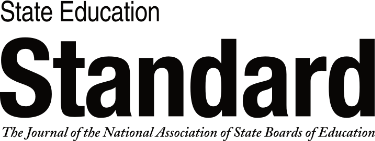In a recent landscape of policies in 50 states and the District of Columbia, I found that states vary significantly in how they authorize, review, and approve teacher preparation providers and programs. What these policies have in common is a requirement that all programs meet the same standards. But in practice, they do not. Too often, alternative certification program providers—particularly those that are not college or university based—are able to take advantage of state statute and regulatory loopholes that allow them to skirt rigorous standards.
The pandemic, coupled with mass shootings at schools and increasingly public, politicized scrutiny about what teachers teach, placed inordinate demands on teachers, exacerbating teacher shortages. Under these circumstances, will states and districts be forced to barter away teacher quality and the equitable assignment of high-caliber teachers just to have warm bodies in front of classrooms?
The Uneven Landscape of Teacher Preparation
Also In this Issue
Five Trends Shaping the Teaching Force
By Richard M. Ingersoll, Elizabeth Merrill, Daniel Stuckey, Gregory Collins and Brandon HarrisonState policymakers looking to increase recruitment and retention should keep an eye on these long-term trends.
The Uneven Landscape of Teacher Preparation
By Leslie T. FenwickState statutes impede students' equitable access to profession-ready teachers.
A Data-Driven Approach to Staffing Schools
By Hannah Putman and Heather PeskeLowering teacher standards may fail to solve actual pipeline problems and can create new ones.
Licensure Tests as Barriers to the Profession
By Victoria Van CleefStates should explore better means of assessing teachers' classroom readiness.
Teacher Preparation for Whole-Child Design
By Jennifer DePaoli and Ryan SaundersState leaders have a role in ensuring that educator preparation both models and reflects the science of learning and development.
Teacher Recruitment and Retention in Missouri
By Paul KatnikState leaders commit to efforts to attract and keep teachers in the classroom.
Ensuring Equity in Grow-Your-Own Programs
By Conra D. GistState-level criteria for programs' design can yield better outcomes in preparing and retaining diverse teachers.
Creating State Education Systems That Value Student Cultures
By William Rodick and Tanji Reed MarshallState boards can set the stage for learning environments that connect and engage all students.
Preparing Pre-K Teachers: Policy Considerations and Strategies
By Amaya Garcia and Cara SklarFour practices to increase the pool of skilled early educators stand out as promising.












 i
i
 i
i